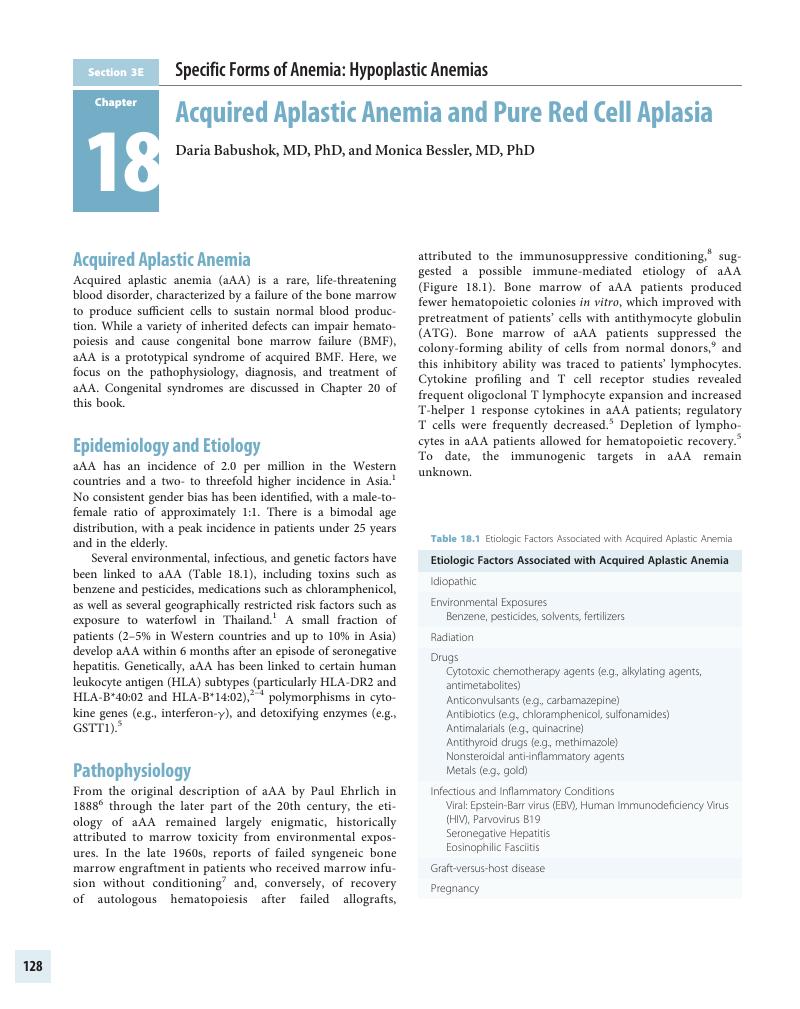Book contents
- Anemia
- Anemia
- Copyright page
- Contents
- Contributors
- Preface
- Section 1 The Normal Human Red Blood Cell
- Section 2 The Patient with Anemia
- Section 3 Specific Forms of Anemia
- Section 3, Part A Microcytic Anemias
- Section 3, Part B Macrocytic Anemias
- Section 3, Part C Hemoglobinopathies
- Section 3, Part D Hemolytic Anemias
- Section 3, Part E Hypoplastic Anemias
- Chapter 18 Acquired Aplastic Anemia and Pure Red Cell Aplasia
- Chapter 19 Paroxysmal Nocturnal Hemoglobinuria
- Chapter 20 Congenital Marrow Failure Syndromes
- Chapter 21 Anemia of Chronic Inflammation
- Chapter 22 Myelodysplasia
- Section 4 Secondary Anemias
- Section 5 Management of Anemia
- Section 6 Summary
- Index
- References
Chapter 18 - Acquired Aplastic Anemia and Pure Red Cell Aplasia
from Section 3, Part E - Hypoplastic Anemias
Published online by Cambridge University Press: 18 April 2018
- Anemia
- Anemia
- Copyright page
- Contents
- Contributors
- Preface
- Section 1 The Normal Human Red Blood Cell
- Section 2 The Patient with Anemia
- Section 3 Specific Forms of Anemia
- Section 3, Part A Microcytic Anemias
- Section 3, Part B Macrocytic Anemias
- Section 3, Part C Hemoglobinopathies
- Section 3, Part D Hemolytic Anemias
- Section 3, Part E Hypoplastic Anemias
- Chapter 18 Acquired Aplastic Anemia and Pure Red Cell Aplasia
- Chapter 19 Paroxysmal Nocturnal Hemoglobinuria
- Chapter 20 Congenital Marrow Failure Syndromes
- Chapter 21 Anemia of Chronic Inflammation
- Chapter 22 Myelodysplasia
- Section 4 Secondary Anemias
- Section 5 Management of Anemia
- Section 6 Summary
- Index
- References
Summary

- Type
- Chapter
- Information
- AnemiaPathophysiology, Diagnosis, and Management, pp. 128 - 136Publisher: Cambridge University PressPrint publication year: 2017

